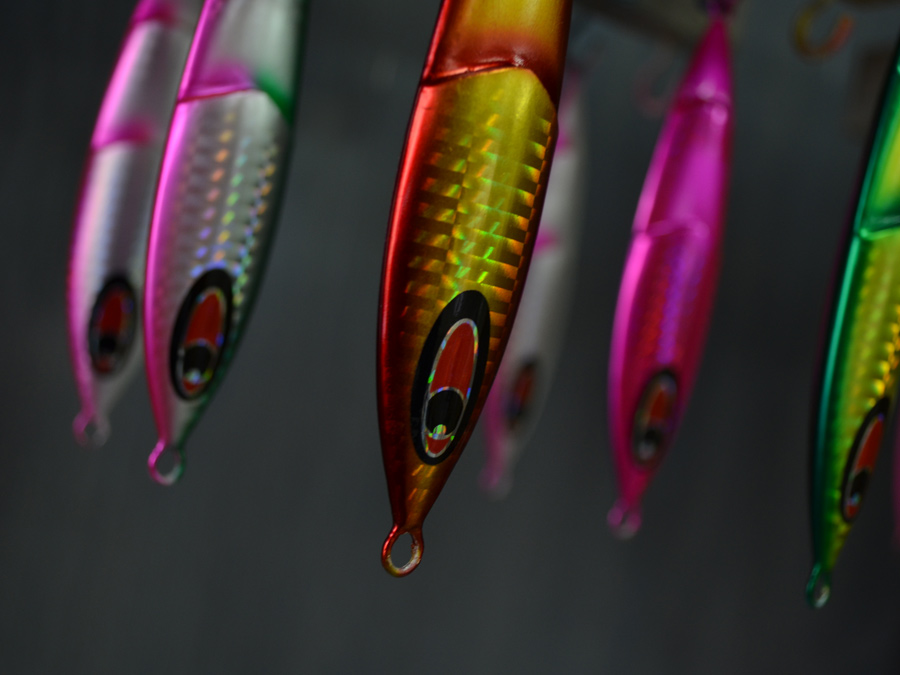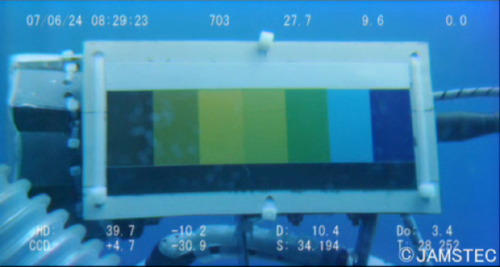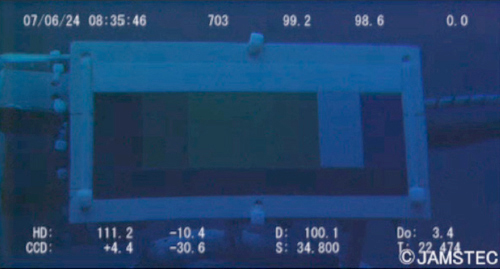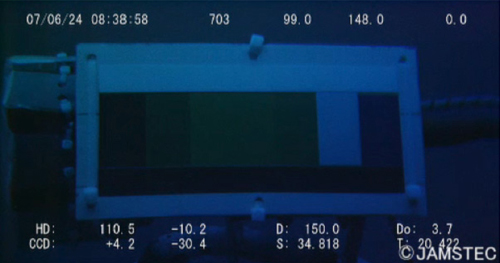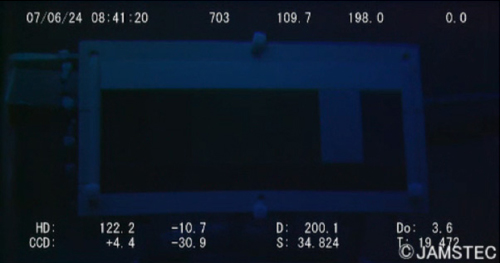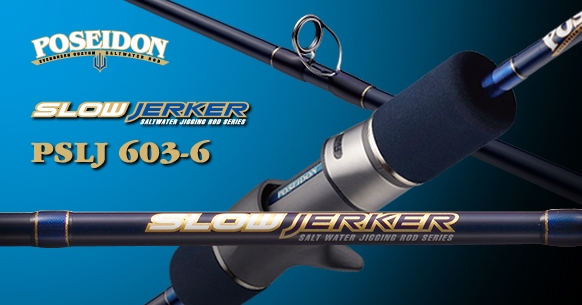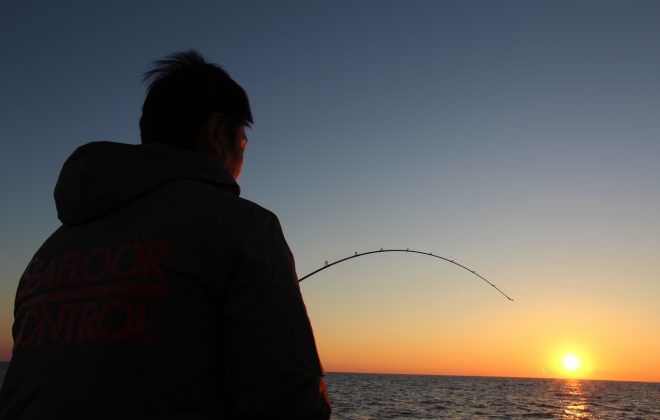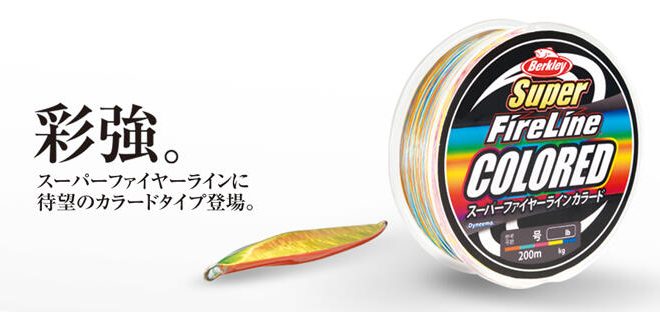Does the color of jig matter?
This is the question.
I keep getting this question. And I see some people really specific with colors and some people just don’t care. This seems like a never-ending, universal myth.
Fact 1: Do fish see colors?
It is believed that some coastal fish have developed to see colors and off-shore fish is more focused on shapes. This is based on the fact that eye has cone cells to recognize colors and rod cells to recognize contrast. Coastal fish have more cone cells while off-shore fish have less. And fish has poor sight, low in resolution, max about 0.5 (Japan), 20/40 (US), or 6/12 (Europe). The image is pretty blur.
So, the kind of fish we are after with slow pitch jigging probably recognize more shape, less color.
Fact 2: Can you see colors in the deep?
Seafloor Control has conducted a scientific study with JAMSTEC on how colors look in the deep water.

They brought down deep this color panel on deep-submarine and took pictures at some depth marks.
Water absorbs colors. First to disappear is the long wavelength color RED. The other end is BLUE. But WHITE lasts the longest.
So, the color in the water seems to be really just the indication of how light or dark the object is. Contrast.
WHITE and SILVER are light.
BLUE is pretty a little light.
YELLOW and GREEN are a little dark.
RED, ORANGE, PURPLE are dark.
As a jig color, the combination of light and dark is of the highest contrast, and it’s probably the most visible no matter how light or dark the background water is. Fish has light color on the belly, the dark color on the back. When looking from below, light belly is visible in the light background. When looking from above, dark back has low contract with the dark background. Fish is probably the most visible when looking from side.
But being visible isn’t necessarily a good color for jig, is it? Many fish camouflage with colors and patterns according to their habitats.
Can someone ask fish???
Fact 3: Do fish care about colors?
For humans, vision is the dominant sense. We rely heavily on vision, about 80% in our perception in general. We care for colors, of course.
How about it for fish???
Scientists say smell and hearing are the dominant senses.
Anatomy shows that fish brain developed highly sophisticated olfactory lobe which recognizes smell. Some believe the fish sense of smell is as good as dog.
For hearing, fish has inner ear, but the main auditory function is done by lateral line.
The lateral line is a sensor system used to detect vibrations (sound waves) which travels so well in the water. Water is a great medium for sound to travel, more than 4 times faster than in the air, much much further in distance. And every movements in the water create vibrations.
Lateral line is running along the side of the body. Their whole body is one big ear! This is what they use to find prey, swim through each other, through structures, and through the dark. Fish also has a sensory system on top of the head which scientists believe to be auditory sensor to pick up vibration that lateral line can’t detect.
Fish in a fish tank don’t bang their heads in the wall. They don’t in the dark either. Some scientists believe that fish may do echo location too. They vibrate the air bladder to generate vibration for the lateral line to detect the echo. Anyway, the lateral line definitely plays a major role for hunting and navigation.
Let’s compare vision, hearing, and small in the water;
Light, which is visioned as colors, travels the fastest but the information (the variation of colors) is limited.
Vibrations, which is heard as sounds, travels fast and very far.
Chemicals, which is recognized as smells, travels slow and not so far.
And fish has chosen to evolve auditory senses as their dominant sense.
Glow Colors
Before you reach your conclusion, there’s another color factor in the ocean. BBC has a great footage about the deepsea creatures which use bioluminescent light as defence.
>> The Deep in The Blue Planet by BBC (2:33)
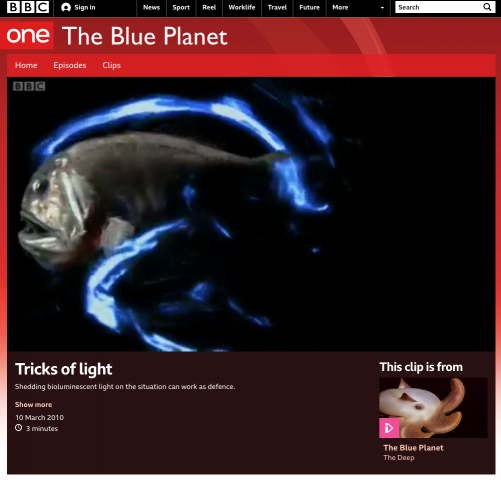
If you are interested, watch this 51:56 footage too. It shares absolutely amazing how these creatures use bioluminescent colors for defense and for offense.
This is not just happening at the deepsea where the light doesn’t reach. These deepsea creatures, including squids, pop up to the surface every night.
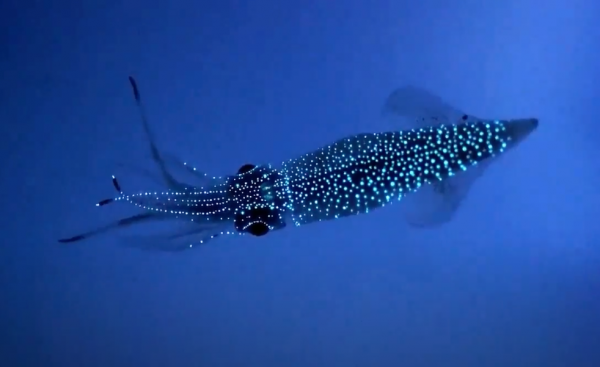
So, it’s probably safe to assume that many fish we target have seen these “night” creatures. They are probably familiar with these bioluminescent colors. Maybe sometimes whenever they can, they may feed on them because they are easy preys.
Color Experiment
Here’s an experiment about the color effectiveness in fishing. The target is hairtail. (I don’t know which one in Trichiuridae family.)
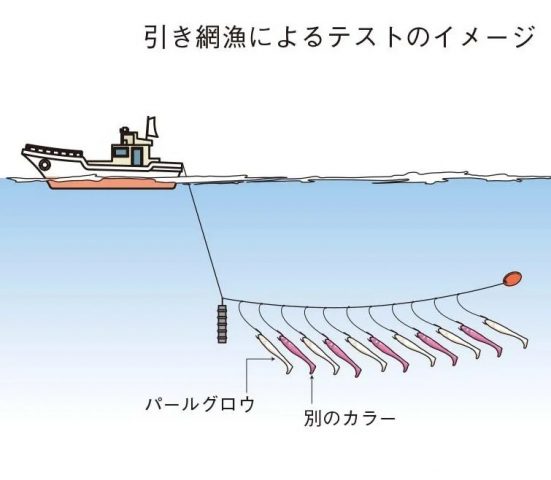
They troll with 80 lures at 300-meter deep. When you ask commercial fishermen who do this operation often about their color of choice, they all reply “Red.”
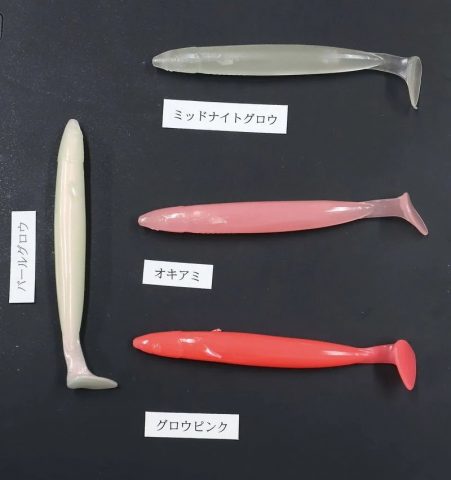
The experiment did the trolling 100 times with each different color. They tried 3 colors, Transparent glow (top), pink (middle), and red glow (bottom), each paired with pearl glow (left).
The results?

The chart tells no significant difference. Colors didn’t make any difference. It still leaves some room that the result can change in different targets, different depths, or different situations.
But remember all the fishermen preferred RED color? I think it happens a lot with us fishing lovers. Once we have a faith in one color, we stay with it. And we tell others too. Experience is important. But everytime I hear an angler say, “In this region, this color works best.”, I can’t help being skeptical. That is the color he uses the most. Of course it works best.
Sometimes you find yourself getting no fish, and the guy next to you is getting all the fish. You wonder what he is doing different.
Do you change your jig to the same color?
Do you change to the same jig type?
Do you change your actions like his?
Do you ask him what line he uses?
Do you ask him what hooks he uses?
You see? There are all kinds of things you can do.
I’m not saying colors don’t matter. It may. But it’s definitely a very small portion of what you can do for a better result. I think that the attitude to believe “this color works best” simplifies the fishing game in a mythical way, and may possibly remove the opportunity from you to assess, learn and grow.
When you have that mind-set, I think the color becomes “not important”. It may make a difference or not, but not important anyway.
Tags In
Related Posts
Leave a Reply Cancel reply
Categories
- 1. SPJ (57)
- 1-1. Principles (9)
- 1-2. Techniques (11)
- 1-3. Setup (17)
- 1-4. FAQ (19)
- 1-5. Tackles (3)
- 1-6. Video Gallery (2)
- 2. Other Offshore Games (5)
- 3. Fishing Report (105)
- 3-1. Totos (25)
- 3-2. Readers (72)
- 4. Fish Cooking (19)
- 4-1. Iki-Jime (3)
- 4-2. The Art of Sashimi (5)
- 4-3. Recipe (7)
- 4-4. Seasoning (3)
- 5. Fishing Charter (6)
- Fish (12)

